Jimmy Carter Country: The Retrologist's Guide to Plains, Georgia
As we remember Jimmy Carter, I present a tour of his hometown, a shrine to the former president and his presidency.
Note: This post was first published on October 1, 2023, and has been updated in the aftermath of President Carter’s death on Dec. 29, 2024.
Jimmy Carter’s is the most unique of presidential hometowns. So much of Plains, Georgia, is built around the image of two things: Jimmy Carter and peanuts. Indeed, at the Smiling Peanut statue on the edge of this small city, a peanut and Carter’s toothy grin are forever fused, much like peanuts and Carter are in the public mind.
This town in southwestern Georgia pays homage to the peanut farmer who became president, only to return to the land that he cultivated — and that cultivated him, where he is much loved and today is being mourned after his death after almost two years in hospice at the modest ranch house that he built for himself and his beloved wife, Rosalynn, in 1961.
On this Retrologist’s tour, you will see so much of what makes this city special, and so much of it reflects President Carter himself, one of the world’s most famous people, who spent most of that time in a town that numbers around 550.
If there’s any place in America where the TV sets should automatically play Bicentennial Minutes, it’s Plains, where, in some ways, it will always be 1976, the year Jimmy Carter took America by storm, becoming president during a remarkable national moment in which a one-term governor from Georgia/ former peanut farmer/former nuclear submarine expert — in other words, the ultimate Oval Office outsider — was suddenly electable to the most powerful job in the world.
He was the anti-Nixon who promised he’d never lie to you, who lusted, but only in his heart (see pin below), who had nothing to do with Vietnam and Watergate. And political cartoonists were having fun again, playing up his toothy smile, the best thing that had happened to their easels since Richard Nixon’s ski-jump nose.

Carter’s smile is epic, the smile that had social media been around in 1976, would have launched a million memes, instead of countless pins, mugs and T-shirts.
After a miserable stretch in America, it was the smile America needed in 1976.
Welcome to Carter Country, which I visited back in December, 2022, where every shop tips its hat to Jimmy Carter, where original souvenirs from the 1976 campaign can still be browsed in mind-blowing abundance, and where cans of Billy Beer — marketed by Carter’s fun-loving brother Billy — can still be purchased. If the brew tasted bad then, I’d hate to think what it would do to your innards now.
On the occasion of Carter’s death, I invite you to join me on a tour of his hometown.
1.) Georgia Visitor Information Center
Our tour begins at the edge of town, at the Georgia Visitor Information Center. For those in a rush, the center gives you a glimpse of Carter’s life and career and features artifacts, including an oh-so-1970s tufted-rug version of the Oval Office seal.
In a guestbook entry signed by Mr. Carter, he wrote in the column where visitors indicate their destination: “Back to Plains in 198?” I’m sure he was hoping the question mark would be filled with a “5,” as in 1985, but instead, as fate would have it, it would be a “1,” as in 1981.
This welcome center opened on Dec. 7, 1977, with Rosalynn Carter cutting the ribbon, and the building happily remains a stylish “Me Decade” affair, heavy on wood, sharp angles and exposed beams. You can take your picture next to a cardboard cutout of Carter, and make a stop at the Rosalynn Carter Butterfly Trail that runs through town.
Another Georgia visitors’ center I visited on this trip, in Sylvania on good old U.S. 301, is a stunning example of midcentury architecture. That stop, which features another Carter cardboard cutout, will get its own profile on the Retrologist soon.
Address: 1763 US-280, Plains, GA [MAP]
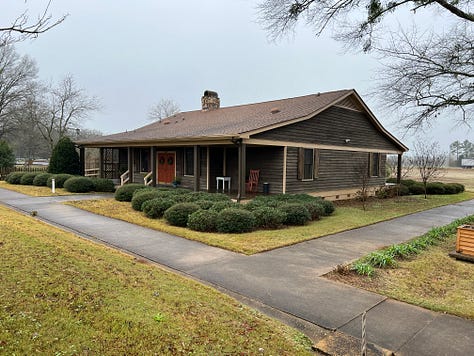
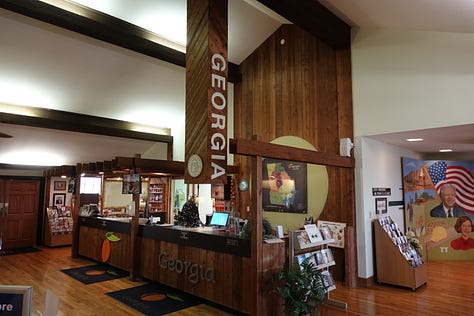

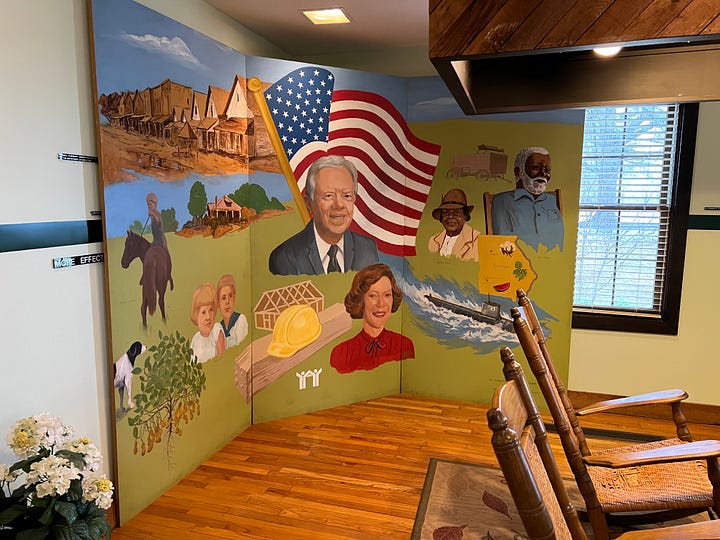
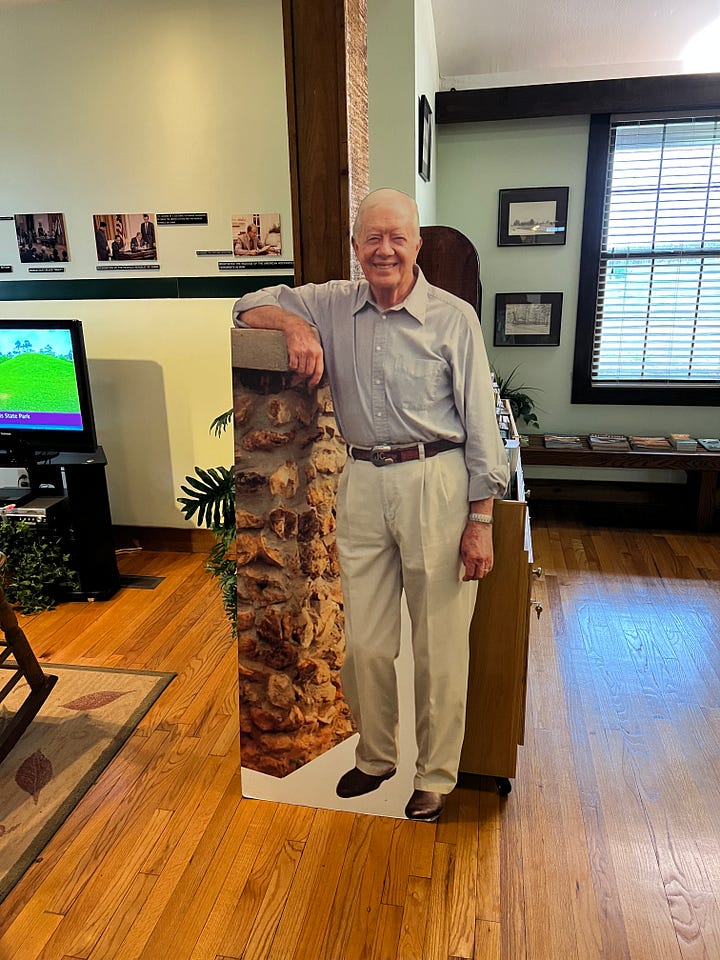
2.) Smiling Peanut Statue
Perhaps the most iconic artifact of Carter’s 1976 quest for the White House, the Smiling Peanut statue can make anyone smile, except maybe the former president. (More on that later.)
The statue was constructed for the 1976 presidential campaign and was featured at a Carter rally in Evansville, Indiana. It then wended its way to Plains, first sitting outside Carter’s election headquarters downtown (more on that shortly). After a mishap with a motorist in 2000, the peanut was fixed up and moved to its present location on Georgia 45 near Carter’s church, which we’ll visit momentarily.
The guts of the peanut are made of wooden hoops encased in chicken wire, and the shell is made of polyurethane foam. It was most recently spruced up a couple of months after I visited.
I loved it so much I had to get a souvenir of it, though I had to track it down later on eBay. (See it below, now a beloved part of the Retrologist collection of roadside kitsch.)
Carter is said not to be a fan of the statue.
According to Roadside America, quoting a member of the Plains Historical Preservation Trust:
Any time it came up that the peanut needed to be restored, he would always smile and say, 'Now, I could take care of that peanut for you.' And we all knew what he meant."
Well, at least he has a sense of humor about it.
Address: 120 Buena Vista Road, Plains, GA [MAP]
3.) Lillian Carter Health & Rehabilitation
Now a nursing center, the old Wise Sanitarium was the hospital where Jimmy Carter was born on Oct. 1, 1924, and his mother, Lillian — aka Miss Lillian — worked as a registered nurse. She also reportedly helped deliver Rosalynn Smith — the future Mrs. Jimmy Carter — at the same hospital a few years later. (Jimmy is said to have first met Rosalynn when she was a mere 3 days old!) Fun fact: Carter is the first U.S. president to be born in a hospital.
Address: 225 Hospital St., Plains, GA [MAP]
4.) Maranatha Baptist Church
It wasn't that long ago that Jimmy Carter would still attend Sunday services here and thrill out-of-towners with friendly chit-chat. His Sunday School lessons were the stuff of legend.
I always hoped to attend one of these services. A banner atop the church’s website stated that Carter, who has been in at-home hospice for over six months at this writing, will not be teaching Sunday school “until further notice.” (That message is no longer on the site — the New York Times noticed it, too, and pointed it out in an article last week, calling it almost “optimistic.”) The church is looking for stories from people who attended Sunday school under Carter’s tutelage.
Address: 122 GA-45, Plains, GA [MAP]
4.) Plains High School Visitor Center and Museum
Jimmy and Rosalynn Carter attended high school in this building, which today houses a museum and is the main visitor center for the Jimmy Carter National Historical Park.
Exploring the halls, classrooms, and auditorium is well worth your time. It features displays examining not only the educational world in which the Carters grew up, but also key moments in Carter’s life and presidency.
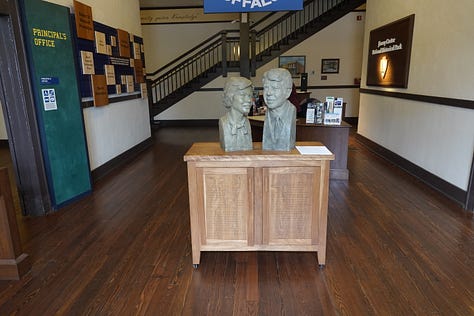

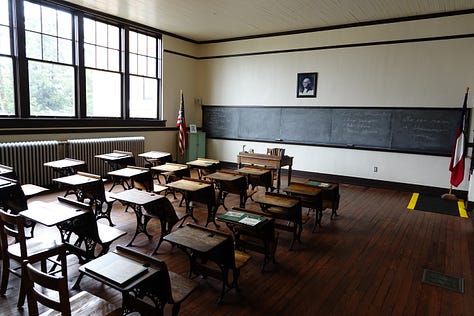

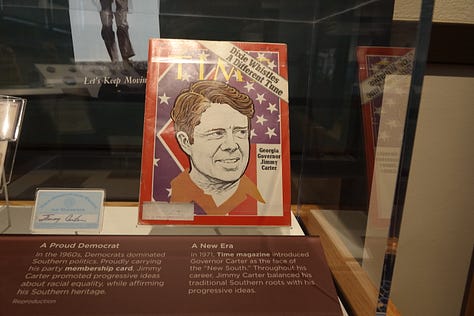




There is a replica of the Resolute Desk behind which Carter worked in the Oval Office, as well as a white Western Electric Call Director telephone that immediately brought to mind this 1981 video, below, of those nail-biting final hours of his administration, as he worked to win the release of the American hostages in Iran.
Address: 300 N. Bond St., Plains [MAP]
5.) The Plains Depot
The train depot was Carter's presidential campaign headquarters, and is an essential visit. It features exhibits on Carter’s political rise and his 1976 campaign that can be explored at your leisure, so take your time and enjoy the vibe. Contributing to that atmosphere is a period television set that plays a compelling short film from 1976 on Carter — it’s on loop, but try to catch it in its entirety.
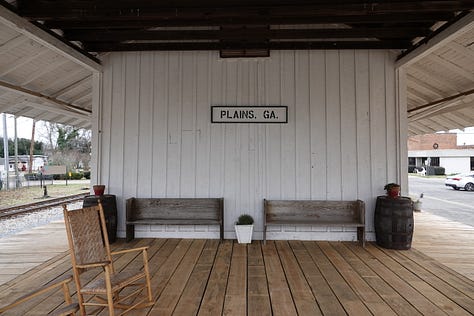



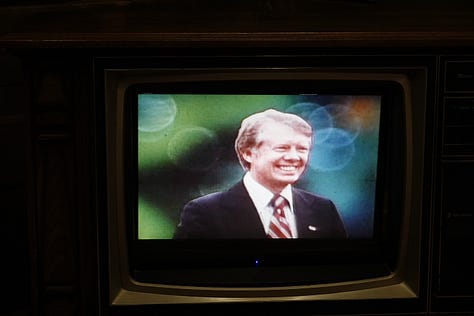

I had the depot to myself on a rainy, chilly late December day last year, a striking contrast to the approximately 10,000 people who walked around here daily when Carter was running for president in 1976.
It’s the oldest building in Plains, dating to 1888, historic in its own right until it became the launching pad for Carter’s campaign. It served the Seaboard Coast Line Railroad from 1888 to 1951, and was central to Plains morphing into a small city. It is only fitting that Carter’s figurative birth as a presidential candidate happened here, too.
Address: 107 Main St., Plains, GA [MAP]
6.) Billy Carter’s Service Station
If a presidential candidate has a quirky relative, you can rest assured it won’t be long before said kin becomes almost as famous as the candidate. And one of the great textbook cases of this political axiom is Billy Carter, Jimmy’s brother.
In 1976, Billy was the proud owner of the Amoco filling station just across the street from the Plains Depot, and reporters, photographers and camera crews soon found themselves interviewing the gregarious and charming Billy, propelling him to a kind of fame that could be useful to a president — until it wasn’t.
For a time, Billy’s adventures were reliable fodder for newscasts, newspapers and magazines — he had a habit of making headlines, stemming from his fun-loving personality and, later, from an influence-peddling scandal involving Libya. A colorful character brimming with mischief, Billy even marketed his own beer for a time. As I mentioned earlier, one of my prized souvenirs from my visit is an unopened, still-full can of Billy Beer, now sitting on one of my Americana shelves at Retrologist HQ.
The building was open when I visited, and I explored the well-curated collection of ephemera and artifacts from Billy Carter’s life, with a special focus, of course, on those years in the 1970s when he became a household name.
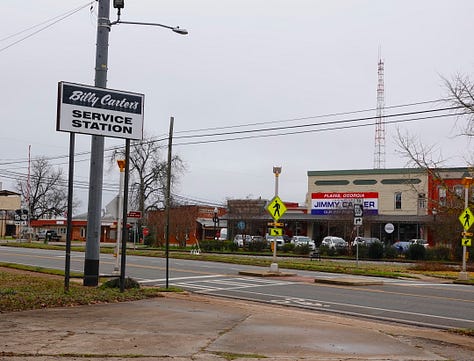
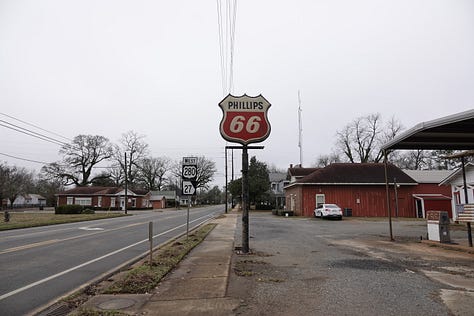
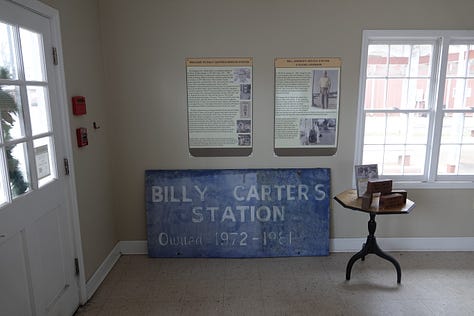
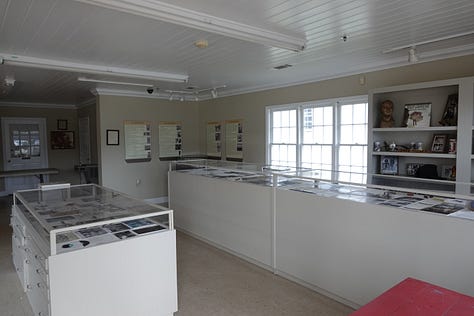
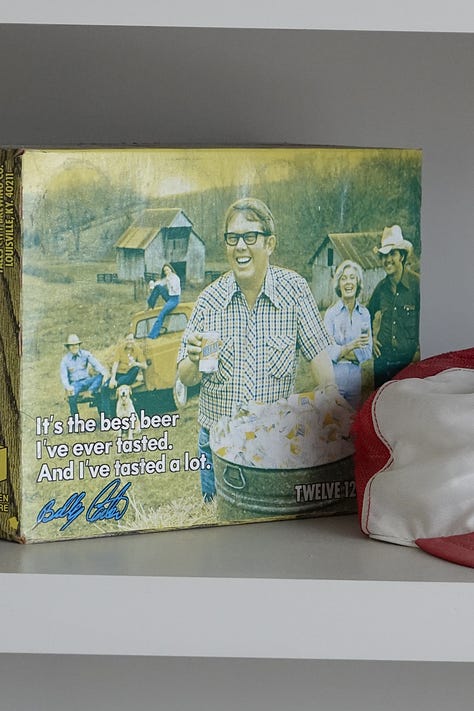
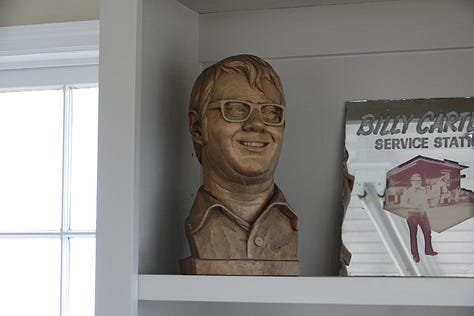
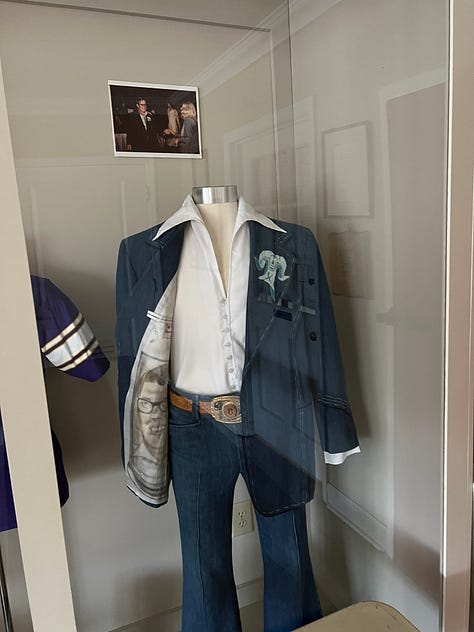
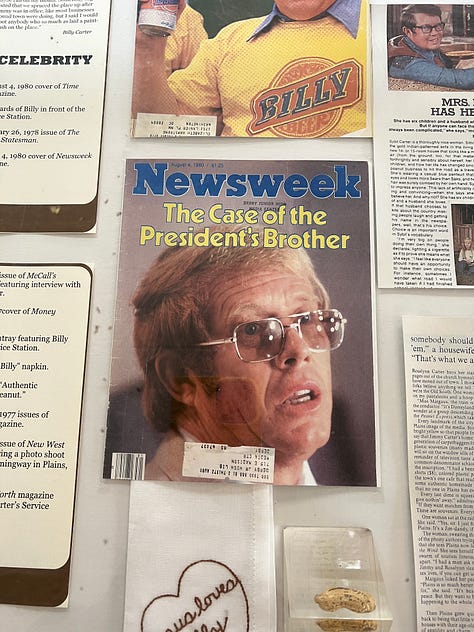

Address: 104 W. Church St., Plains, GA [MAP]
7.) Downtown shops on Main Street
To take in Main Street is to get a glimpse of life here in the late 1970s. Indeed, the huge banner declaring the town the home of the 39th president gives the place a time-travel feel.
Take your time visiting the shops here — they are chockablock with interesting souvenirs from Carter’s campaigns and presidency. The building with the Jimmy Carter sign is the former Carter Peanut Warehouse, where I stopped to pick up some vintage souvenirs (a poster of Jimmy and Rosalynn labeled “Why Not The Best?” and that can of Billy Beer) and some delicious peanut ice cream served in a souvenir cup, a favorite flavor, of course, of the former president.
The building was purchased by Carter’s dad, James Earl, in 1934, and after the elder Carter’s death, Jimmy returned from his high-flying career as a Navy nuclear submarine officer to run the family peanut business from here, and eventually launch his campaigns for state senator and governor.
The love for the president is everywhere, and windows in several shops still had posters wishing him a happy 98th birthday. I’m sure downtown is covered today in iconography for his 99th birthday bash, which was officially celebrated on Saturday due to the now-averted threat of a government shutdown the next day.
If you want to spend more than a few hours here, you can stay in downtown Plains. The Plains Historic Inn is graced with rooms that are decorated to reflect different decades in the lives of the Carters, from the 1920s to the 1980s. Call ahead to see if you can book the presidential suite, which is decorated in a 1970s style. And the best part is the rooms were designed by Rosalynn Carter herself!
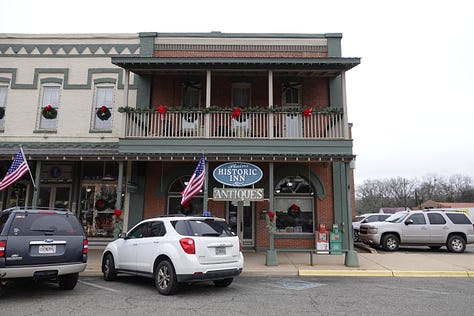
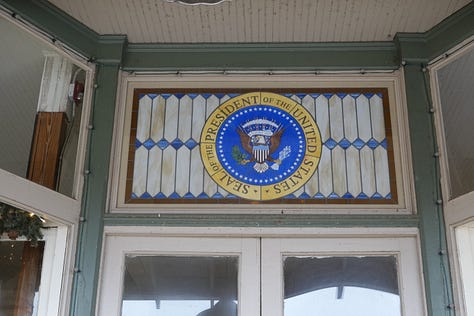


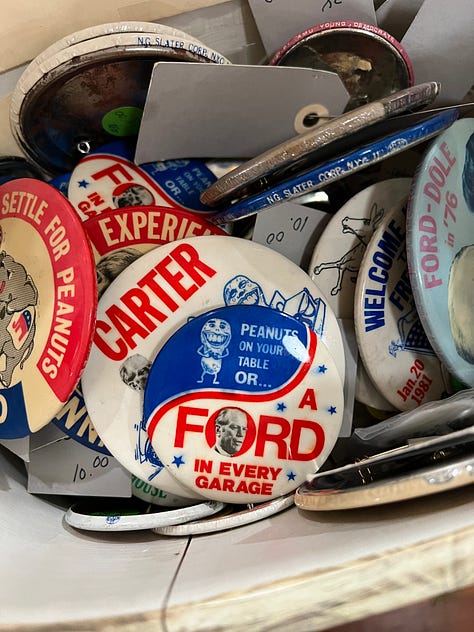

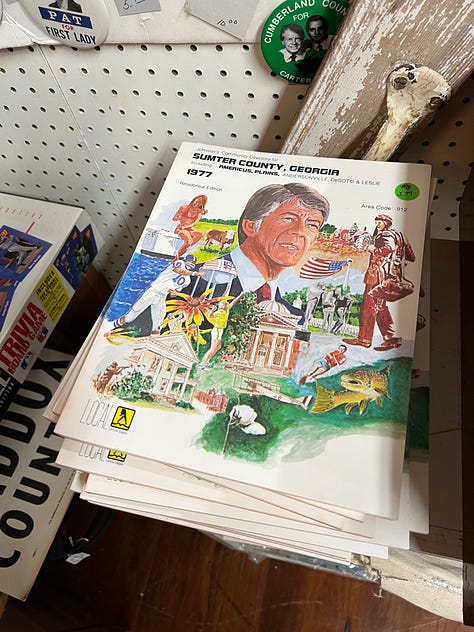
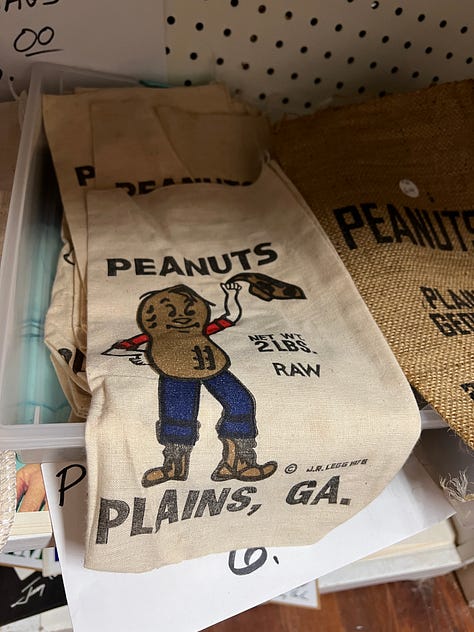

If you can’t stay, be sure to shop at the antique mall downstairs, where I picked up a few more vintage goodies from the Carter presidential years.
8.) Coca-Cola sign
We’re in Georgia, where “Coke Is It” is more than a 1980s advertising slogan. And right around the corner from the former Carter warehouse, you can find this mural for the Real Thing. [MAP]
9.) Rosalynn Carter childhood home
It is a private home that can be admired from the street. The Rosalynn Carter Butterfly Trail begins here.
Explains the Library of Congress:
Rosalynn Carter's family moved to this house in 1928 when she was 16 months old, and she spent her life here until she wed Jimmy Carter in 1946. Architecturally, this turn-of-the-century gable-front dwelling represents a modest Queen Anne influence.
Address: 219 South Bond St., Plains [MAP]
10.) The Carter family home

This is probably America's most-protected ranch home, and understandably so. A Secret Service fortress may surround it, but at its heart, it’s still the same simple home Carter built for himself and his wife in 1961.
The Carters returned here after leaving the White House in 1981, to begin perhaps the most extraordinary — and longest-lasting — post-presidency America has ever seen, one where Carter chose not to mine the limitless wealth that goes with being a former U.S. president but to help solve some of the world’s most intractable problems through his Carter Center in Atlanta. His many books, which offered a steady stream of income atop his presidential pension, were written in a converted garage at his home.
Folks in town can suggest approaches that will give you a view from a distance, but I did not avail myself of that. Driving by was a sufficient thrill for me. The house will now become a museum, and Jimmy Carter will be buried near a pond on the property where his wife, Rosalynn, was interred after her death in November 2023.
More information on the Carter home can be found here, with photos from the Library of Congress.
11.) The Boyhood Farm

The Carter family moved here in 1928, when the future president was 4 years old, and it’s a short drive from his home, the farm just outside town in Archery.
James Earl Carter Sr., the president’s dad, and family “cultivated a variety of crops, including corn, cotton, peanuts, and sugar cane, alongside maintaining a large family garden. Young Jimmy Carter called this place home from the age of four until he left for college, and it holds some of his earliest and most cherished memories,” according to the National Park Service.
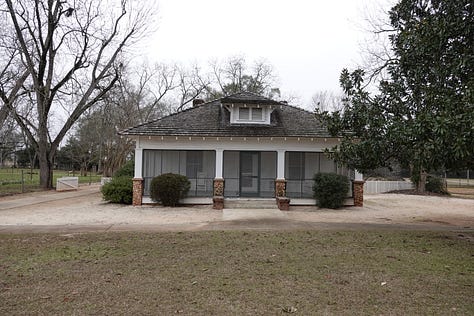
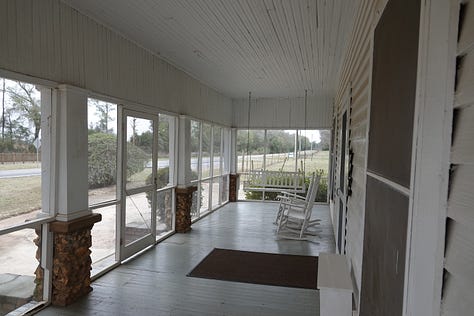

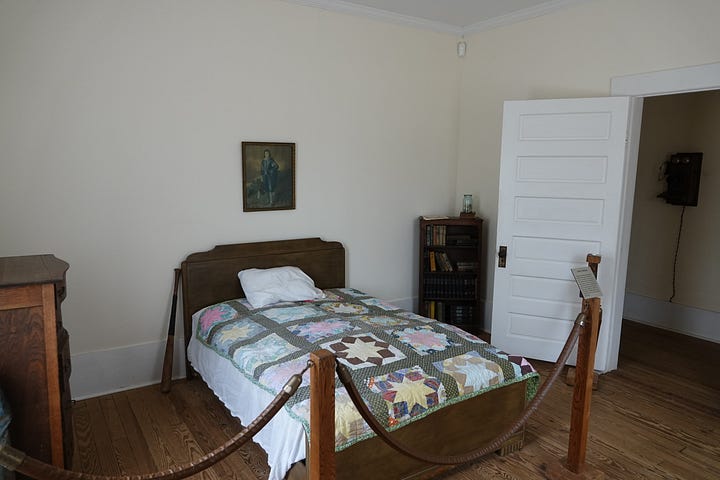
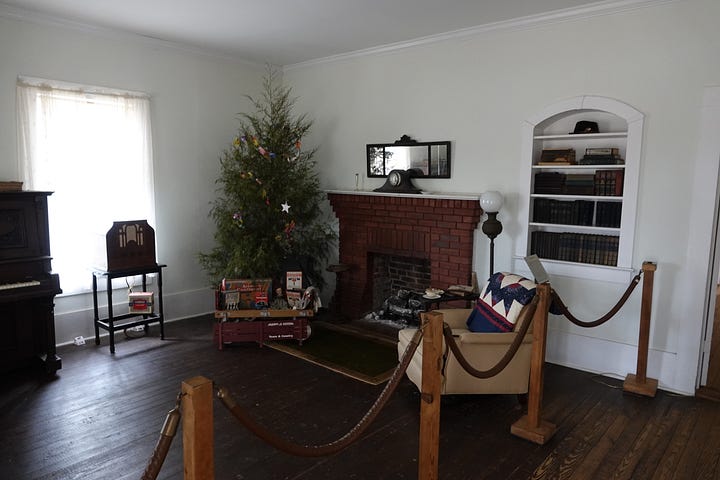


The complex features Carter’s childhood home and the family store, and remains, in a way, a working farm.
Heat came from fireplace and stove, and Carter described the house as hot in the summer and cold in the winter. The home lacked running water, too, in the early days, and electricity did not come along until 1938. The house is restored to appear as it did before electric service arrived here.
The Carter family, who were the second owners of the farm, sold it in 1949 to the Downer family, who sold it to the National Park Service in 1994.
You can also hear President Carter himself tell stories of life at the farm at certain stops. And among the animals on the property is a goat named, appropriately enough, Billy.






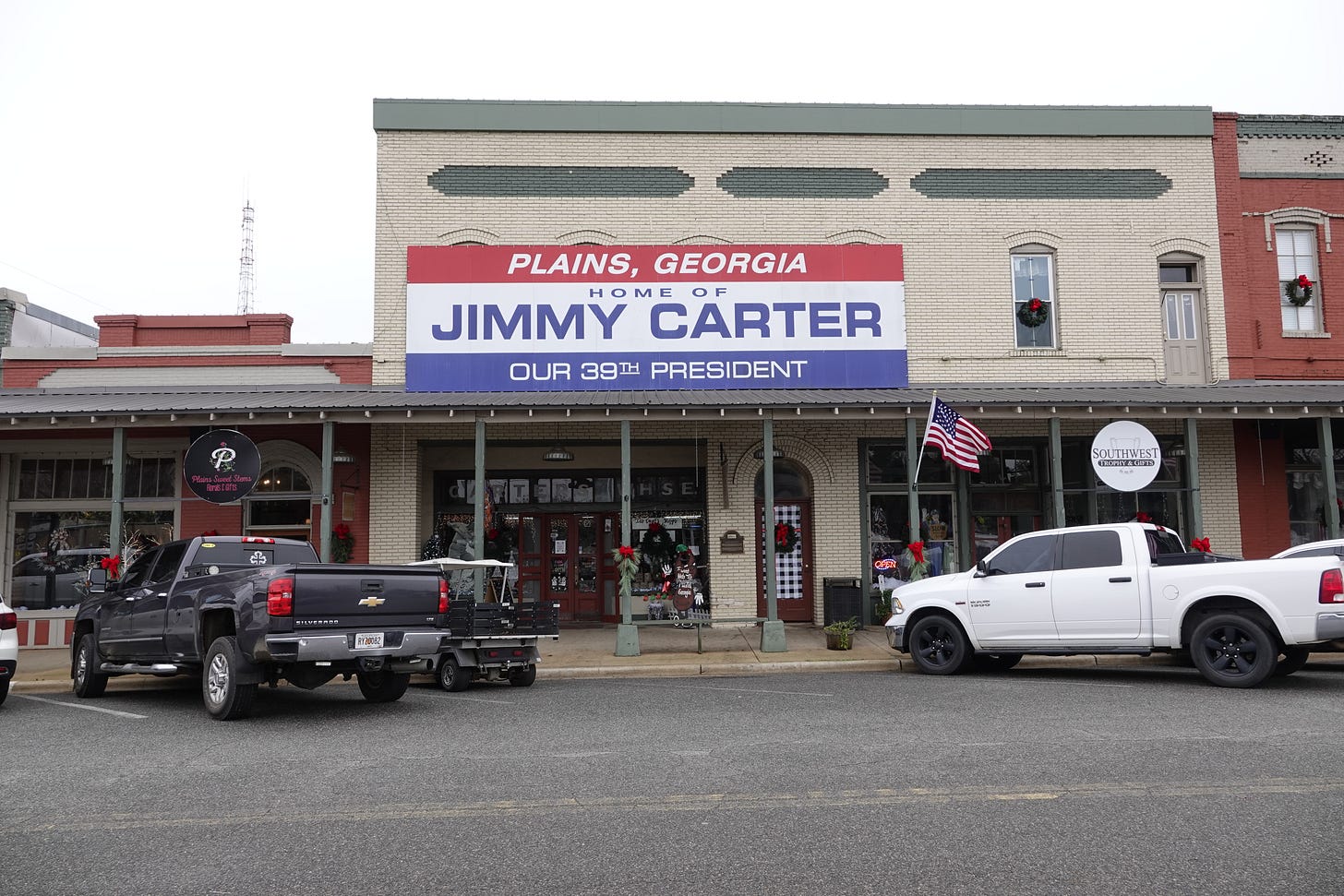


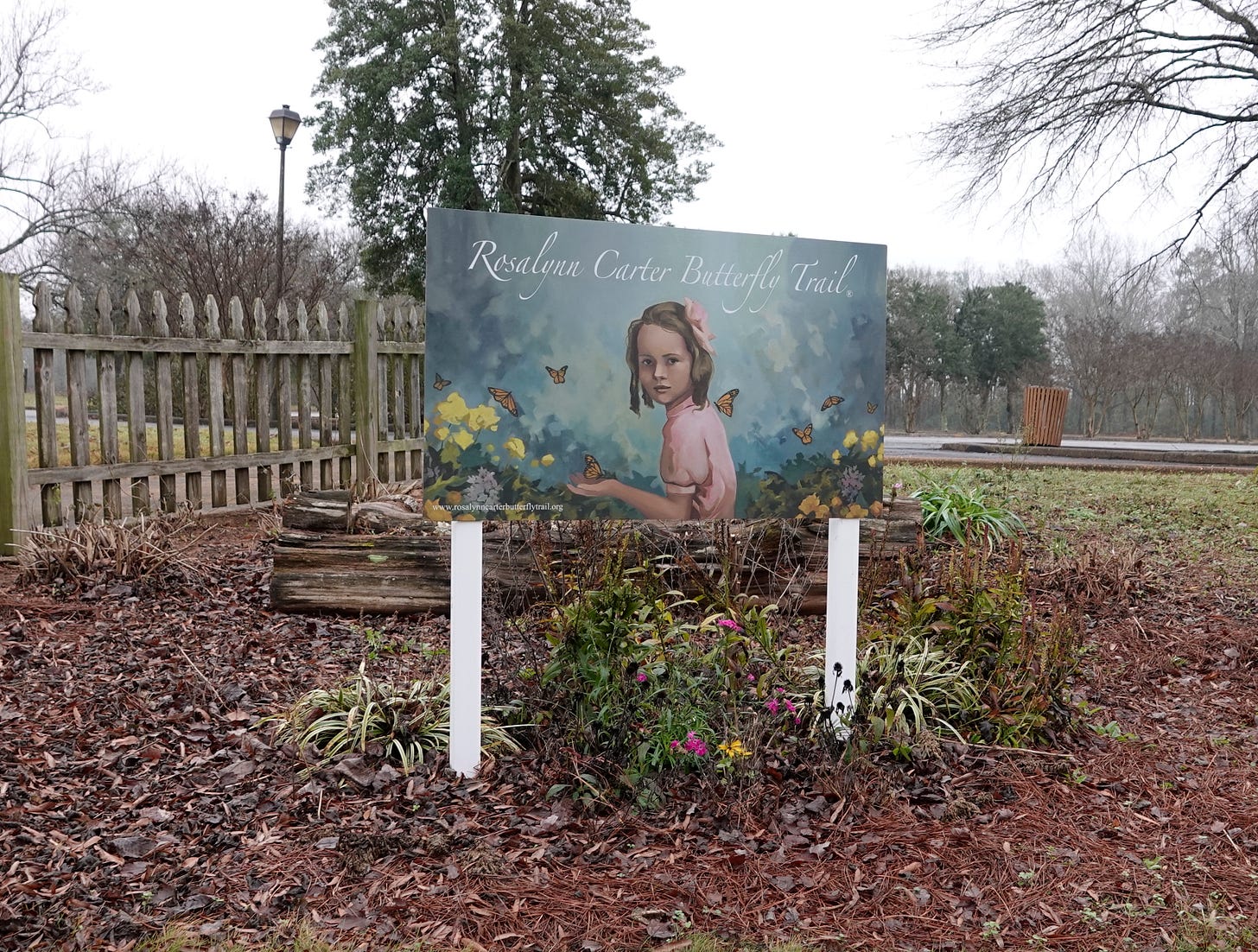
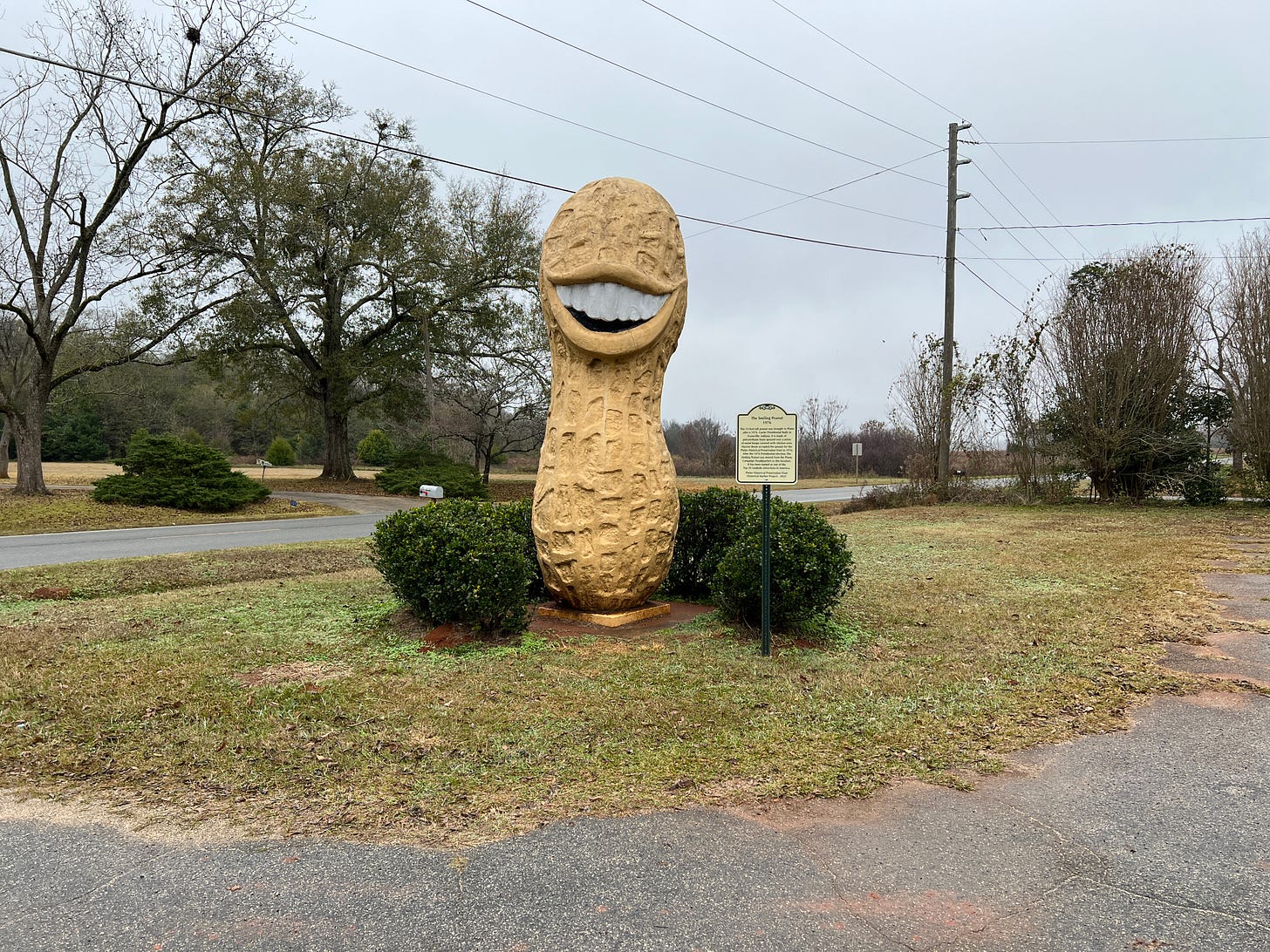



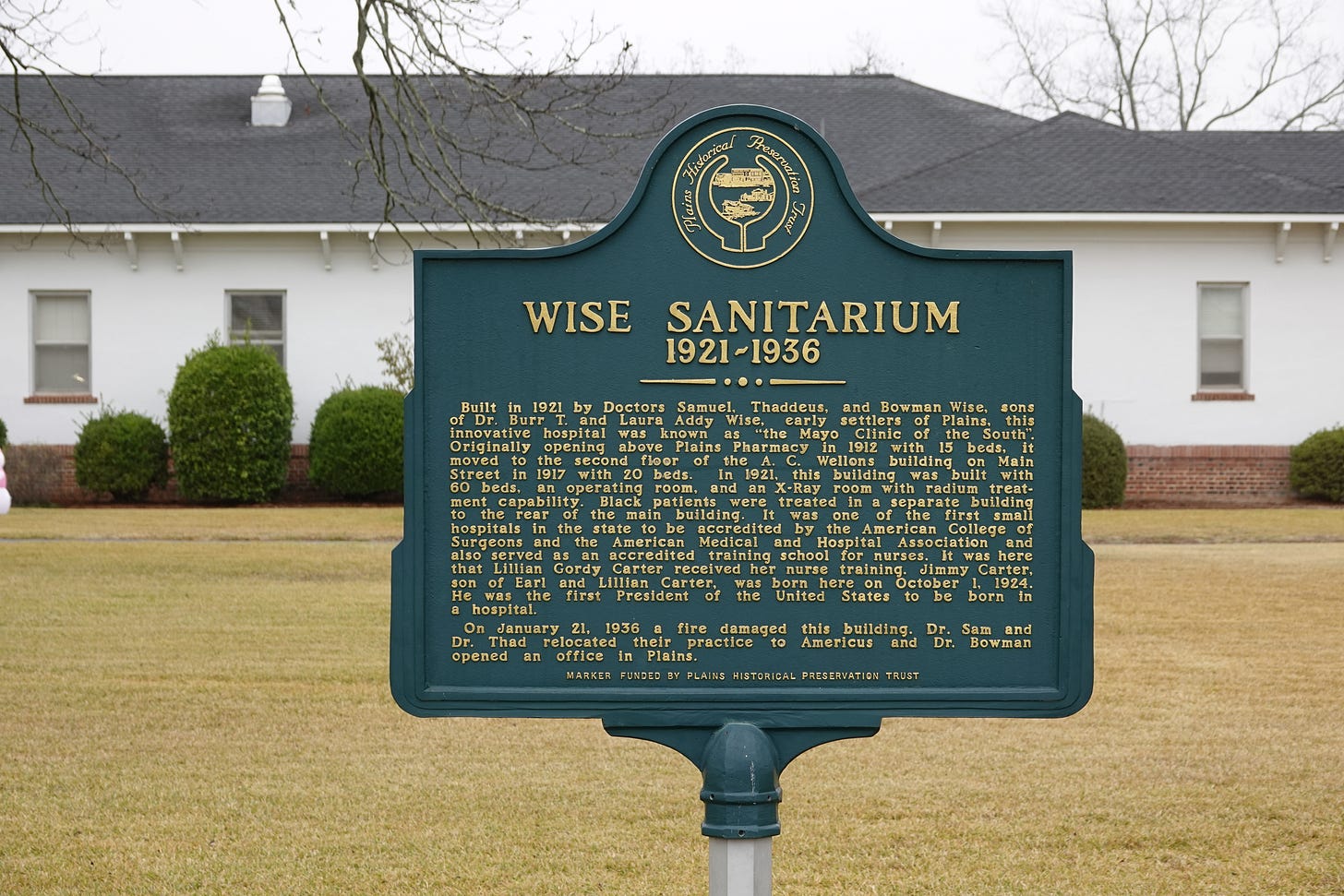

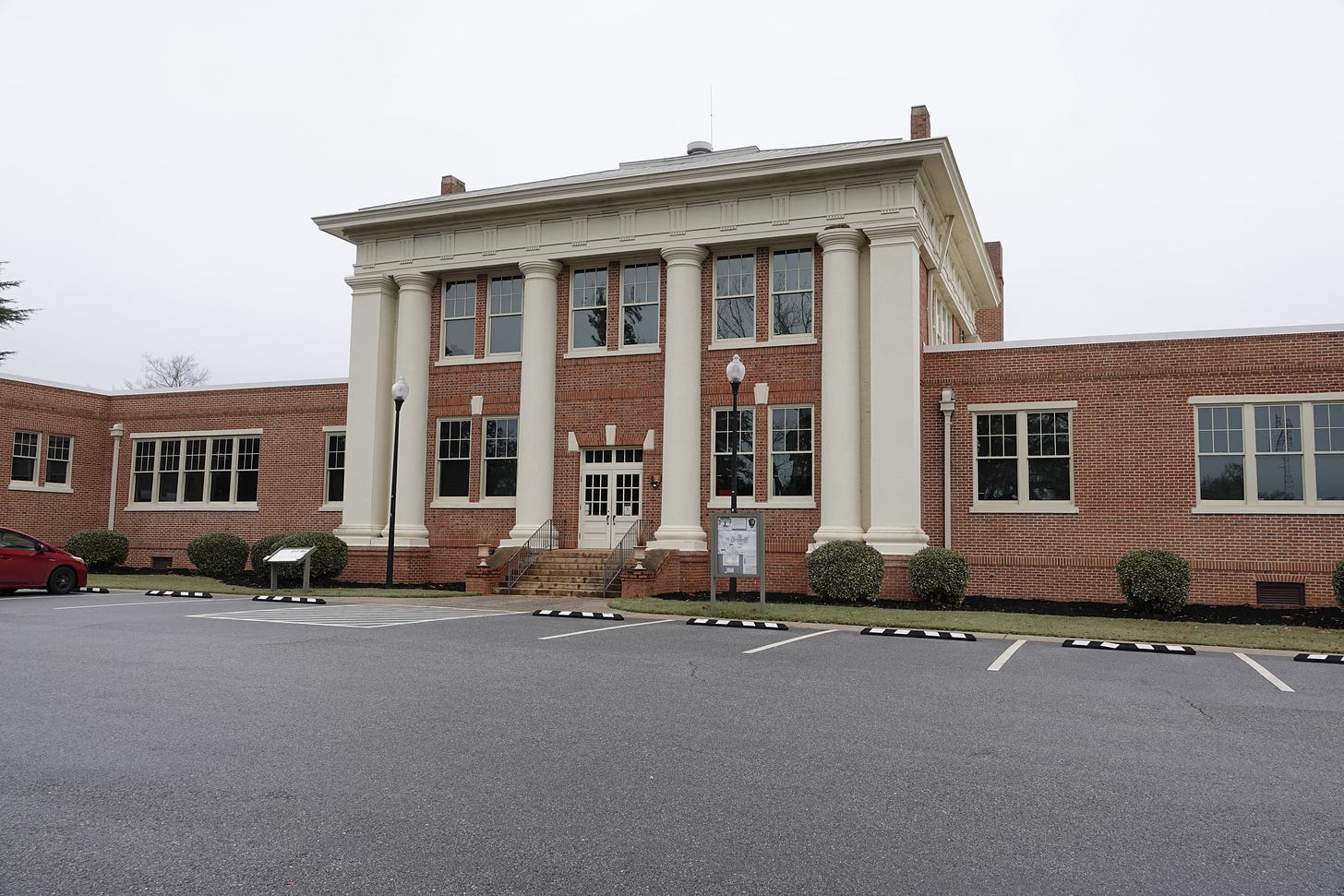
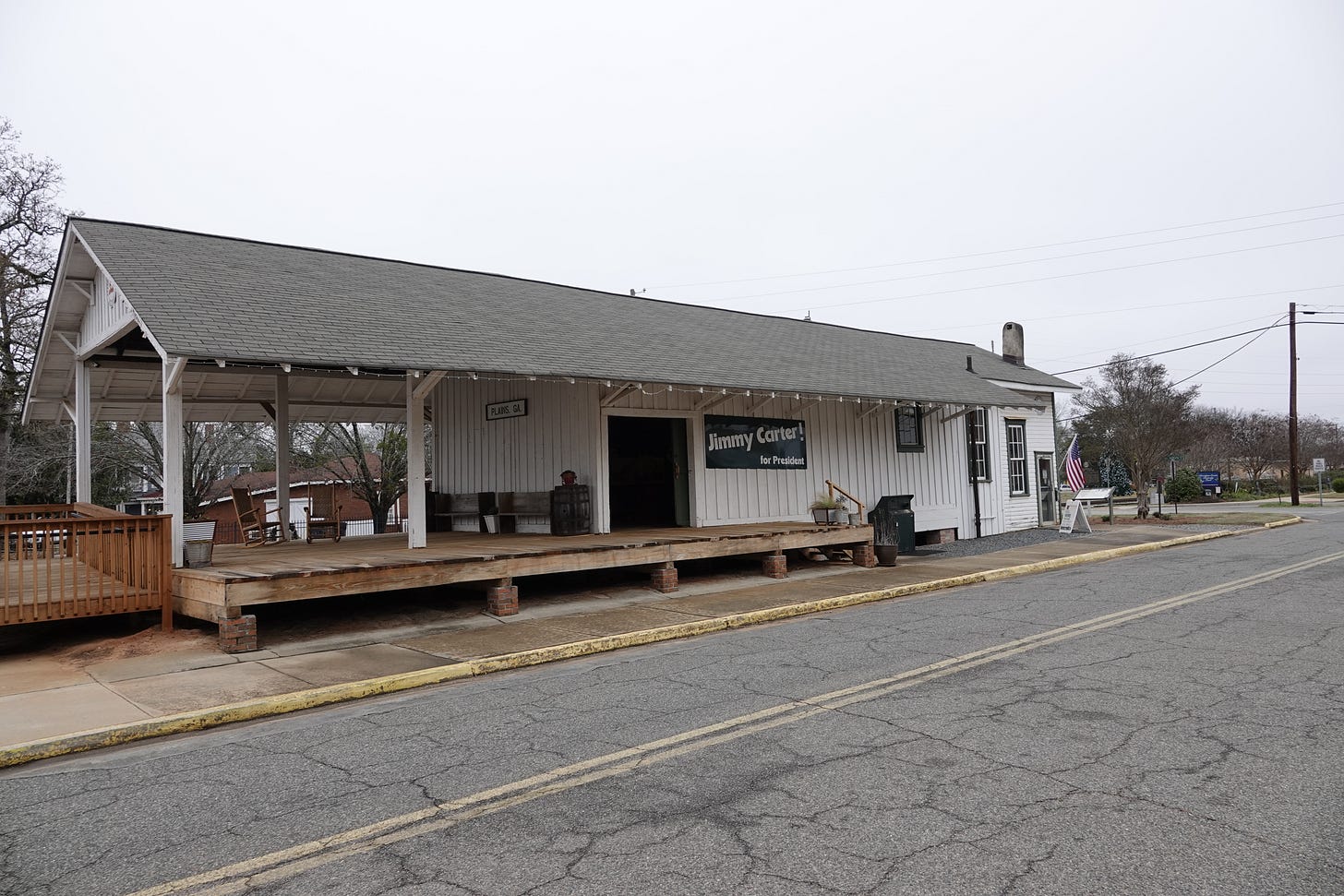
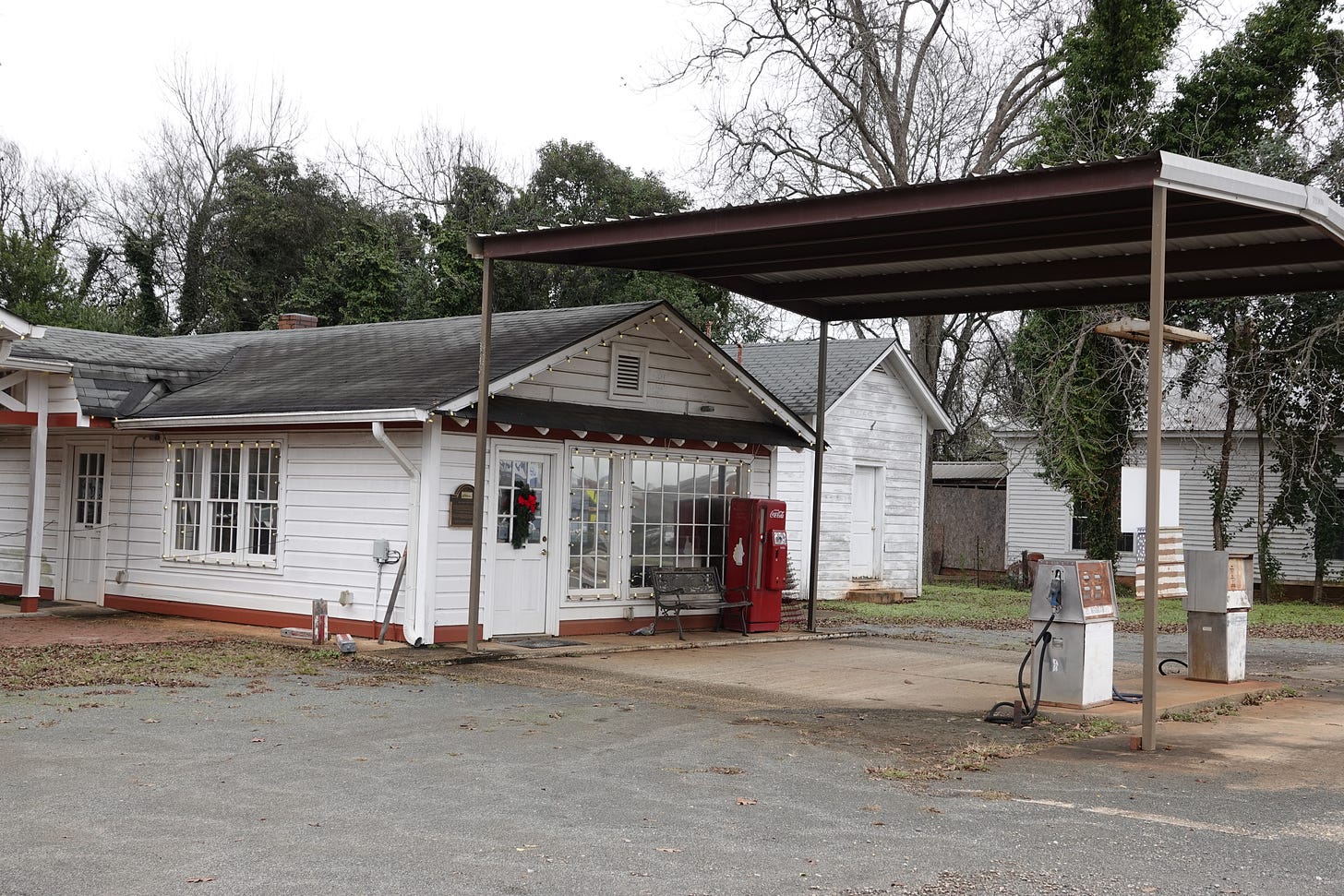






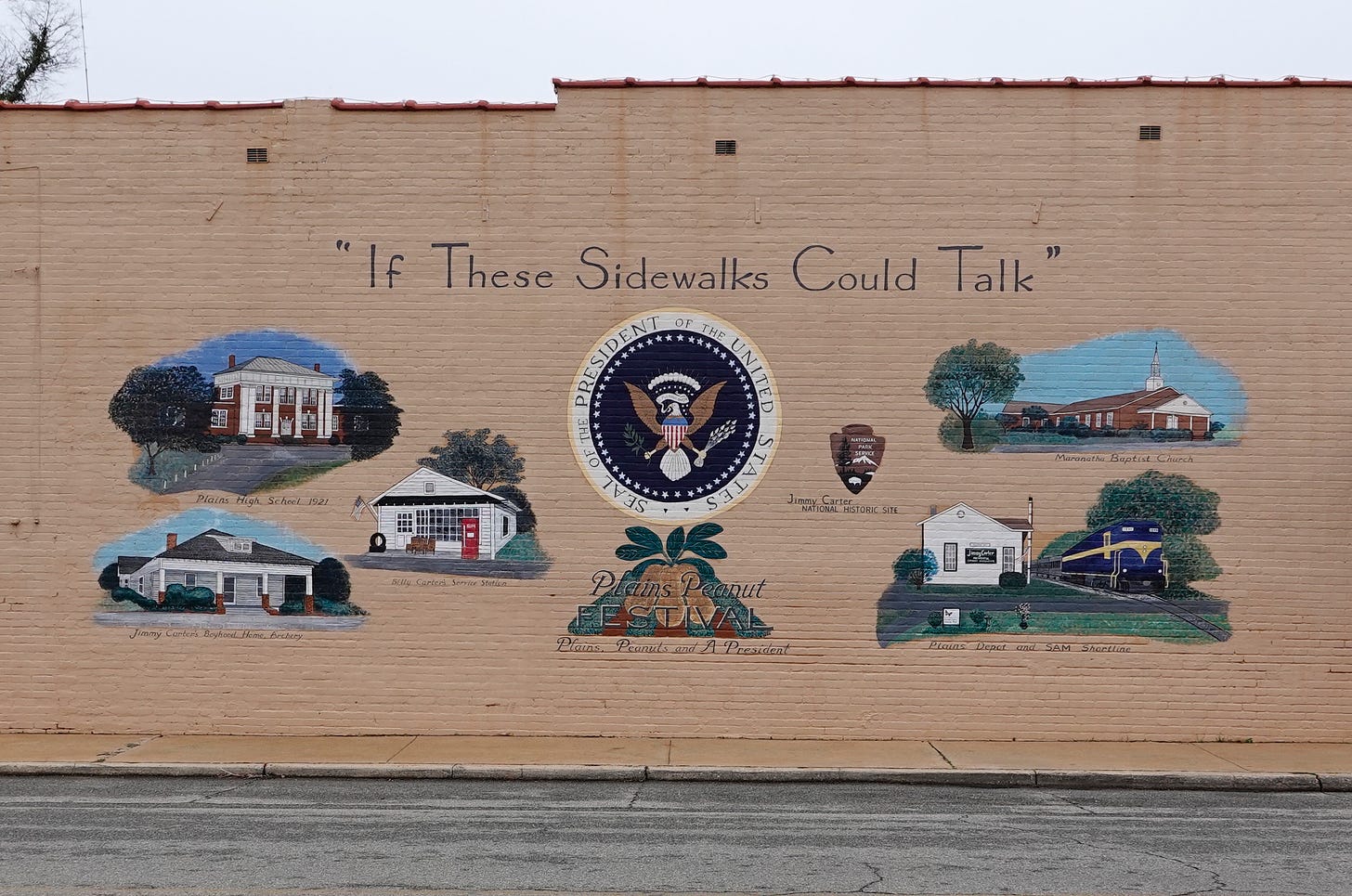

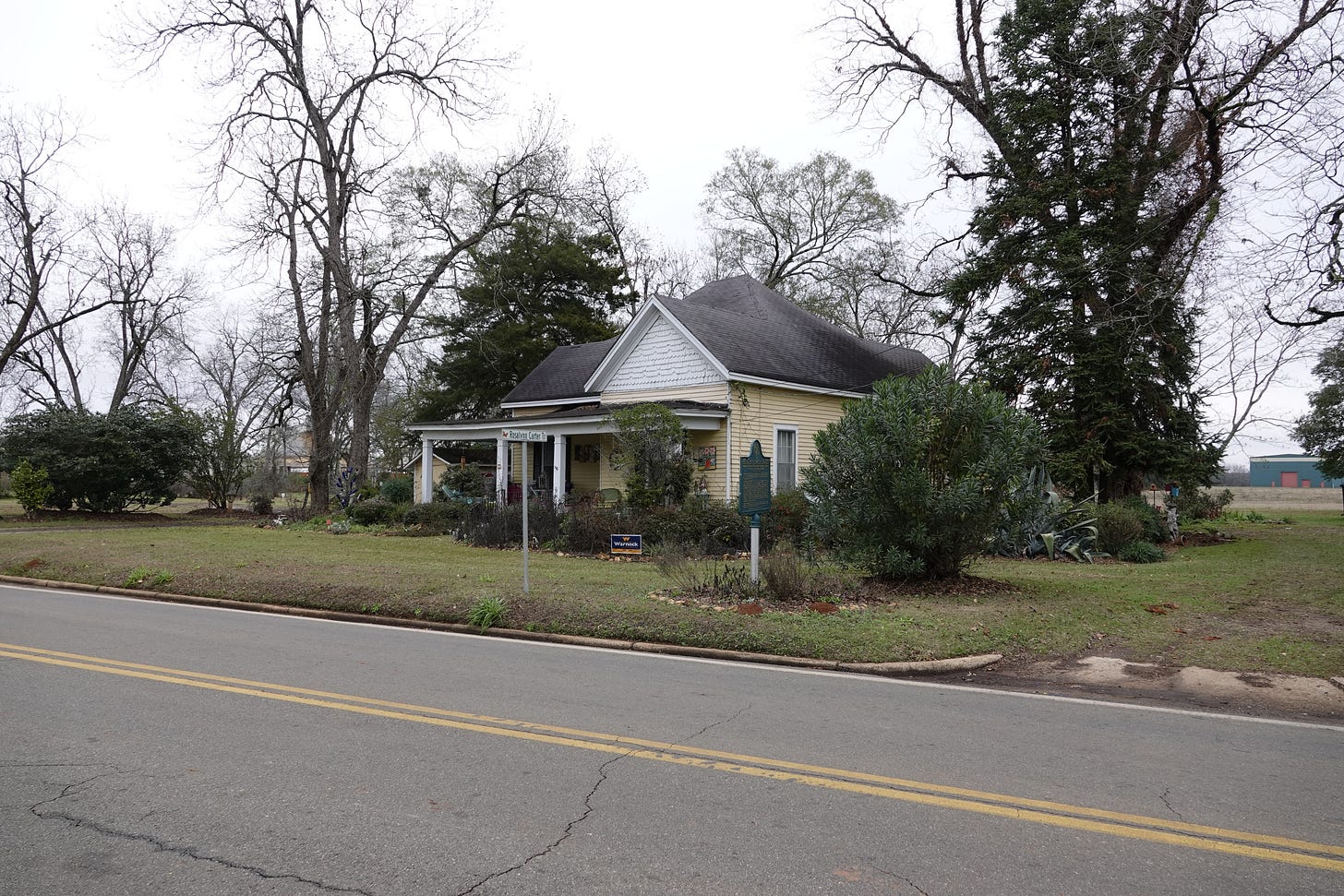
Thank you for a beautiful reminder of this great man. A model for how an ex-president should conduct himself. We were lucky to have him. We didn't know it at the time it seems.
Sadly the region of Southwest Georgia is one of the poorest regions in the country. Tourism to Plains has benefitted this often neglected part of Georgia and the United States. If you're planning a trip to Plains, may I also suggest some side excursions to Americus, a nice little college town, Providence Canyon and Kolomoki Mounds State Parks, and the historical town of Fort Gaines, GA, which has a wonderful mesuem, a neat Frontier Village, and world class fishing on Lake Eufaula. Far from any interstate, this area and its residents could use a boost in their otherwise dying economies. Safe travels.